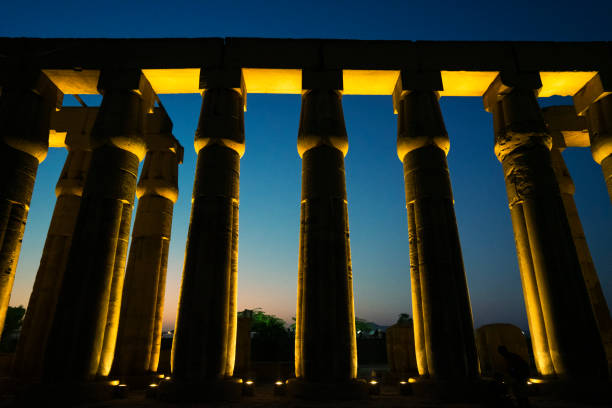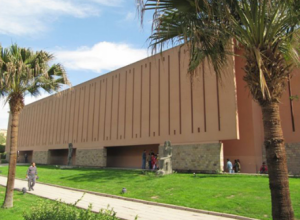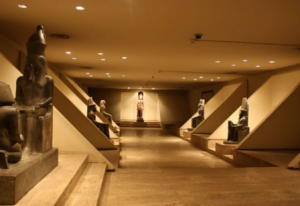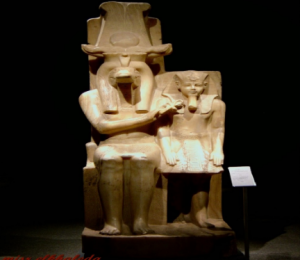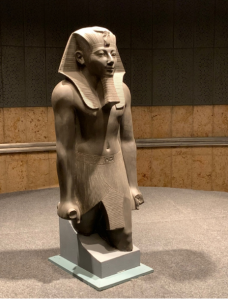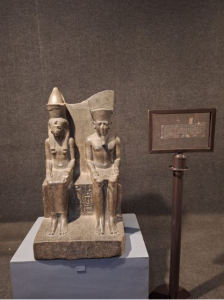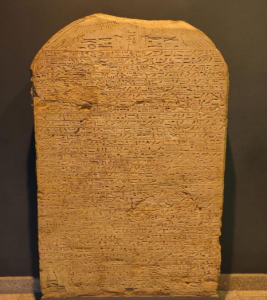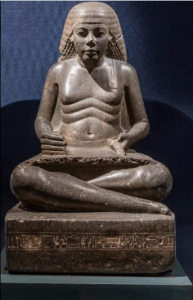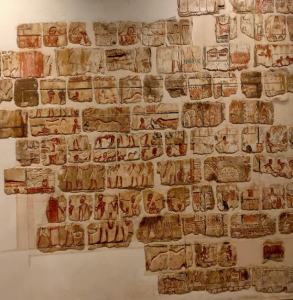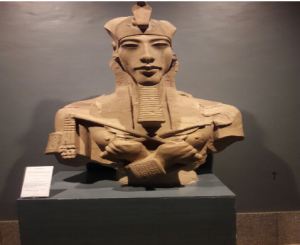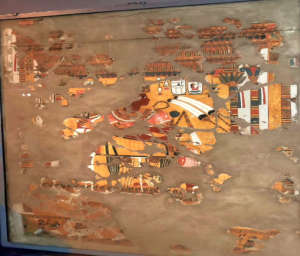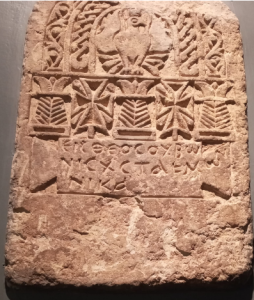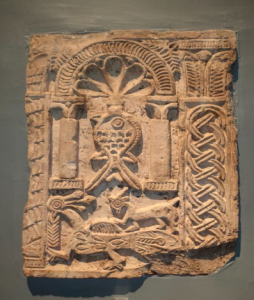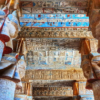Luxor Museum
The museum was opened on December 12, 1975. The cache Hall was opened on December 12, 1991. Then, on May 19, 2004, the Glory of Thebes Hall was opened. The museum is located on the Nile Corniche in Luxor and has an area of approximately 5327 square meters. Attached to the museum is a garden that includes 5 archaeological pieces. The museum consists of 6 halls, including: the entrance, the first floor, the second floor, the cache Hall, and the glory of Thebes Hall. The museum consists of two floors.
The first floor
contains a collection of rare artifacts found in Luxor. The most important statue in the museum is an alabaster statue of the god Sobek with King Amenhotep III. There is also a magnificent statue of King Thutmose III made of schist. A granite head of King Amenhotep III and a head of the goddess Hathor in the form of a cow. A statue of the god Amun and a rare head of King Senusret III. There is also the Karnak stela, which contains a hieroglyphic text related to the struggle of the rulers of Thebes against the Hyksos, the first foreign invasion of Egypt and the liberation of the country from the invaders.
Upper Floor
Most of the upper floor is dedicated to King Akhenaten. We will see a collection of his statues, some inscriptions with his wife Queen Nefertiti and his children, as well as some furniture, utensils, jewelry, and amulets. We also find Coptic paintings (icons).
Cache Hall
On January 22, 1989, a worker in the Karnak Temple wanted to warm himself. The floor of the temple was then made of soil, so he dug a hole to put some wood in to make a fire. Luckily, while digging, he accidentally found the head of a statue. He informed the Egyptian authorities who began excavating and found what became known as the Karnak Temple cache. The most important findings include statues of King Amenhotep III, Amun, and Hathor. The museum has dedicated an entire hall to display many of the items found in this cache. It was discovered on January 22, 1989, and the hall was opened on December 12, 1991. One of the most beautiful statues found in the cache is the double statue of King Horemheb. There is also another statue of King Horemheb kneeling before Amun-Ra, offering him two jugs of wine. There is also a statue of King Amenhotep III made of pink quartzite, standing two and a half meters tall.
The museum also contains
King Tutankhamun’s war chariot, found disassembled in his tomb, used for hunting and training. Royal mummies of King Ahmose I, who expelled the Hyksos, and King Ramesses I, founder of the Nineteenth Dynasty. Unique tools that demonstrate the ancient Egyptians’ skill in architecture and engineering, such as a carpenter’s square used to measure the angles of buildings and a wooden tool in the shape of the letter “A” with a string and a pear-shaped stone piece used to measure horizontal surfaces, as well as a vertical plumb bob. Two stelae erected by King Kamose, depicting his victory over the Hyksos. A statue of the scribe and sage Amenhotep son of Hapu, engineer of King Amenhotep III. A small obelisk of King Ramesses III.
Facade of the Luxor Museum and the museum garden showing royal statues
The Hall of the Glory of Thebes on the ground floor of the Luxor Museum
Statue of the god Sobek and Amenhotep III in the Luxor Museum
Statue of King Thutmose III made of gray basalt, found in Karnak in 1904
Double statue of granite for the god Amun and his wife, the goddess Mut, between them are two cartouches of King Seti I
A limestone stela of Kamose inscribed with his victory over the Hyksos, which was found in Karnak.
A statue of the sage and vizier Amenhotep son of Hapu in the form of a scribe, made of black granite.
A statue of King Amenhotep III made of quartzite.
The triliteral wall of King Akhenaten from the Karnak Temple with scenes of daily life, the most beautiful of which is a farmer feeding a calf and two geese pecking grain from an open jar.
Akhenaten in the Luxor Museum
A colored drawing of Amenhotep III, fragments of a plaster panel depicting King Amenhotep III, behind him are parts representing his mother (Mut Am Awia) placing her hand on his shoulder, and in front of the king, two ostrich feather fans appear. At the bottom of the panel, scenes of some prisoners appear, and in front of the king, a cartouche is read with the king’s name.
Mummy of King Ahmose I in the Luxor Museum
A Coptic tomb from the 6th century AD in the form of a semicircular stone piece with a cross in the middle, and we find an eagle spreading its wings.
A panel that was part of a church located in the Karnak Temple, made of limestone. It is a semicircular arch supported by two columns. Inside the arch, at the top, there is a seashell, and between the columns, there is a representation of a fish, as the fish symbolized faith in the Christian belief.
The top of an apse made of limestone from the 3rd century AD decorated with plant motifs representing an eagle, and behind the eagle is a seashell, and it ends at the bottom with a part of the cross.

